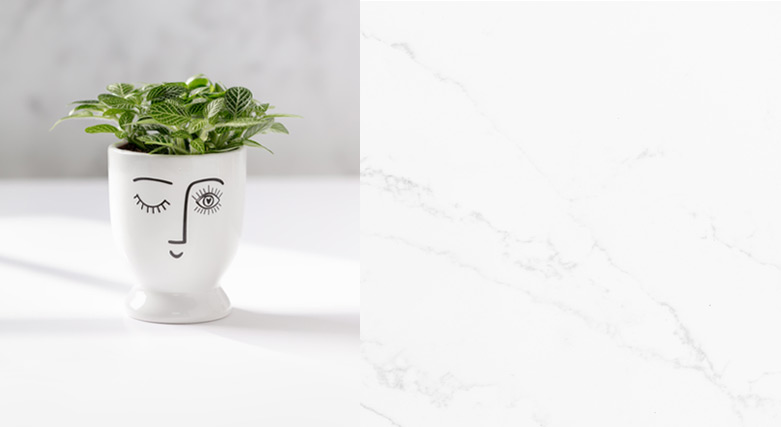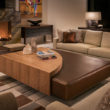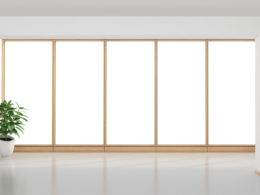What is Meant by “To The Trade”?
For newbie designers, the term “To The Trade” is a confusing, yet intriguing concept. What it essentially means is that as a professional interior designer you get access to services and products that are supposed to be sold to professional interior designers only. In other words, To The Trade (TTT) vendors do not operate as a retail store open to the public – instead, they cater to professional interior designers and only sell their products through them.
Benefits of To The Trade
As an interior designer, having a trade account can have both creative as well as financial benefits.
1. Early Access to Unique Designs
With access to a wide range of products by vendors and manufacturers offering “to the trade” services, you will be able to provide clients with unique designs that they otherwise do not have access to. TTT accounts make it easier to get “made-to-order” products for your clients, in a variety of sizes, colors, shapes, patterns, and designs. Clients love this as it helps their properties have a unique touch. Also, you as the designer that helped them achieve their unique dream home, get to be their hero!
2. Financial Benefits

With trade accounts, as a designer, you get the added financial benefit of being able to add a markup of your choice to the items purchased by clients through you. Vendors are able to offer you products at sometimes heavily discounted prices because unlike a walk-in customer who is looking for a one-time purchase, interior designers are purchasing products regularly for their clients. This kind of bulk purchasing makes it easier for vendors to provide items with heavy discounts which proves to be beneficial for the designer. As a designer, you can mark up prices to include a profit, taking into account the compensation for sourcing, ordering, purchasing, handling, delivering, and installing.
3. Smooth Customer Service
Another benefit of having trade accounts with vendors is the long-term relationships you develop with them. You can be privy to the latest trends and designs before they hit the market. The strong business relationships you develop with the vendors will give you wiggle room in case there is a defect in a product that has to be replaced or returned. Some vendors also give extended warranties so that you can confidently stand behind your product recommendations to your client. You will also be able to receive personalized customer service and shipping follow-up. From the client’s perspective, the smooth customer service that you provide will make you, the designer, look like a lifesaver.
4. Share Benefits With Clients
Designers can also share discounts with the clients, which adds to the value of working with them. This creates an added incentive of working with professional interior designers having trade accounts.
5. Easy Procurement of Samples
Having trade accounts also means easily getting your hands on samples of fabrics and materials which will help you immensely with boosting your mood board game for client presentations.
6. Referral Bonuses
As a token of appreciation to the designer that recommended them, some vendors will give you additional discounts and referral bonuses when you place clients orders with them.
What Do You Need to Set Up a Trade Account?
Now that you know the benefits of having a trade account, let us see how to get your hands on one. For the purposes of setting up a trade account, you will need the following:
- Proof of Business: This is a way to establish the legitimacy of your business. The documents required may include your LLC documentation, business cards, your website, or even your social media account.
- A Tax ID: This is proof that you have the proper channels through which you file your taxes. This can be obtained from the federal government.
- A Bank Account: This verifies that your business is legitimate and functional.
- A Resale License: This refers to your sales tax number. The resale license allows you to buy items from your vendors tax-free and pass the tax through to your end clients. This does not mean that you will be exempted from paying tax. You will still have the responsibility of filing and reporting sales tax, it just means that it is your customer that pays the tax as the end-user, not you as part of the distribution chain. The resale license can be obtained from your state government. Do keep in mind that many vendors do not sell to designers who do not have a resale license.
How Do You Start Setting Up Trade Accounts?
Once you have all your documents in order, you can now start applying to specific vendors for trade accounts. To do this, you can either visit them in person or connect with them via their website. You will be asked to complete an application form that may look something like this:
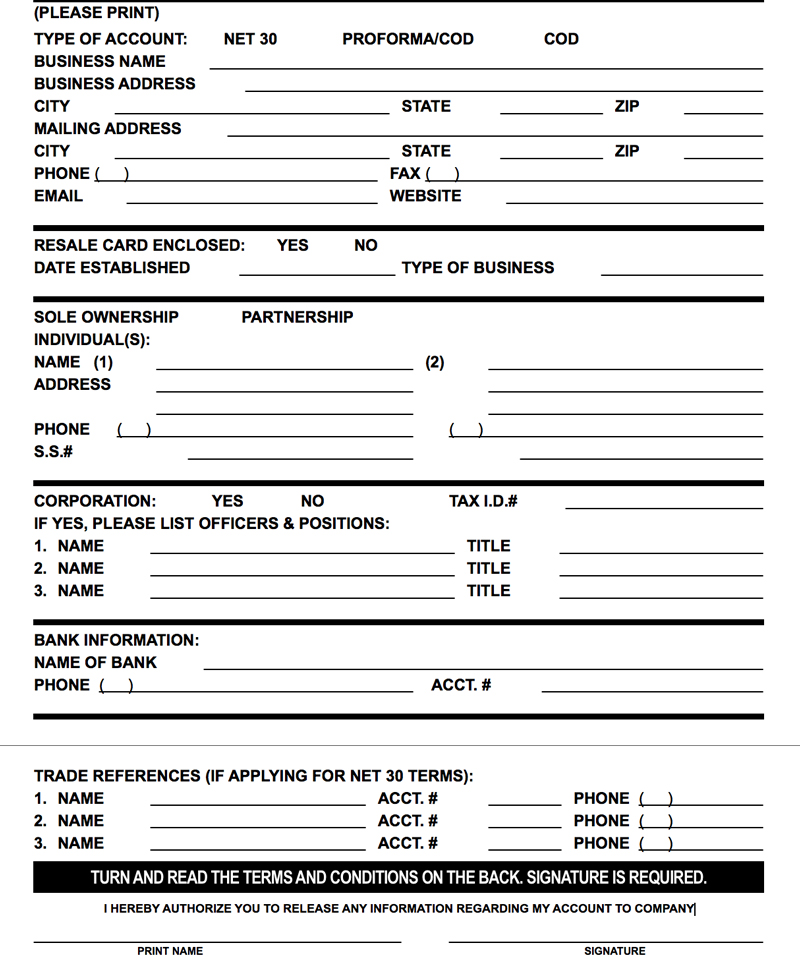
If you’re stumped at the very first section (type of account), do not worry. It is a simple question, but just worded in a complicated manner. The question is merely about how you will be paying for your purchases, whether prior to shipping (PROFORMA), on receipt of shipment (COD), or on credit (NET 30) where you will have 30 days to pay your invoice after the vendor ships out the product. Many designers choose proforma, as this helps keep their account books clean and stress-free.
If you do have trade references from other designers then insert those details into the form. However, if you are new to the business, you can just leave it blank. Only if you choose NET 30 would trade references become compulsory. If you choose proforma, trade references are not mandatory.
After submitting your application, you will receive a vendor ID number. Use this number when purchasing products from the vendor to avail of the trade discounts.
How to Explain to the Trade to Clients?
With “trade accounts” being public knowledge, many designers have been confronted with these questions by clients:
“How much is your markup?”
“How much is the net price?”
“Can you share your designer discounts with me?”
“Can I use your trade account?”
“Can you send me the trade invoice for this item?”
“I found the same item for cheaper online. Why did you charge me more?”

So how do you handle these questions? There are three things to keep in mind when explaining to the client about how trade accounts work, such that it protects your profits and the clients’ interests
1. Designer-Vendor Confidentiality
From the client’s point of view, they would much rather hire a designer who could get them great discounts. But the fact of the matter is that markups on products purchased through trade accounts are one of the major sources of revenue for designers. Therefore information about net price is confidential and is a sacred word between you and your vendors. You could offer to share a small percentage of the profit with your clients which matches or is slightly lower than retail pricing. But it is recommended that designers should never resell items purchased from trade accounts at net pricing.
2. Customer Service Compensation
If you like, you could be transparent in your contract or Letter of Agreement about the percentage of markups on items. There are chances that clients find it disagreeable that you are charging them a lot more than net price. In such situations, as a designer, you should educate your client about the value addition that the markup brings to the service. This amount should be considered as compensation for the amount of time you spent sourcing the perfect items, handling the purchases, receiving and checking items for damage, and for delivery and installation at the client’s space. The markups are also compensation for the customer service you will provide in case there is a defect in the product after installation, and for handling exchanges and returns. Inform the client very clearly that you stand behind the items that are purchased through you and will take responsibility for any damages incurred along the way. Show them how that would not be the case if they purchased the same item at retail prices. Explain to them how the system is set up in a way to prevent the consumer from making unnecessary purchases and costly mistakes. No one would take the risk of a sales transaction without the upside.
3. Designer is Retailer
Armed with the resale certificate, you act as the retailer for the client. Therefore the invoices you provide (with your markups included in the final prices) are the only ones that the client needs to be provided with. If the client asks for the vendor’s invoice, you have the freedom and power to politely decline, saying that it is proprietary information, and that vendor invoices are confidential and are not needed for the client’s taxation purposes. Remind them that Crate & Barrel doesn’t provide invoices to show their cost either.
Where Should You Start Setting Up Trade Accounts?
If you have visited your local design centers you would have seen the “trade only” notice. This just means that the store is open for professional interior designers only. Markets like High Point Market usually cater to designers only. Browse around your local design centers and visit design markets to get an idea about the kind of vendors and their products you would like to associate yourself with.
Here are some of the most popular places that you can set up trade accounts with:
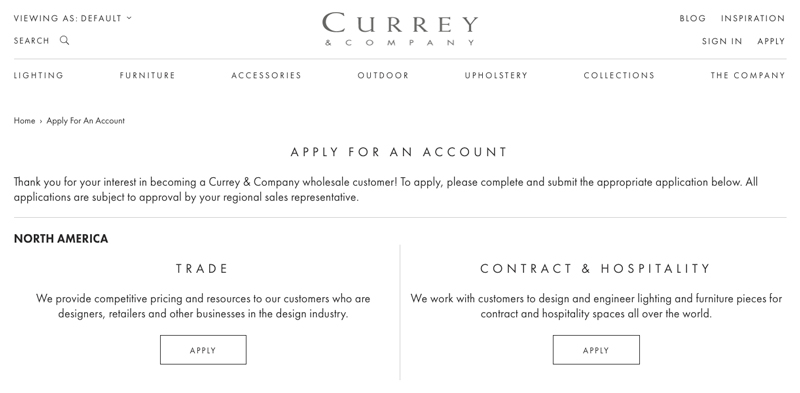
Conclusion
Having a trade account has many benefits to you as an interior designer. Therefore, no matter whether you are a seasoned designer, or a newbie in the industry, take the time to build your trade accounts. Having access to TTT items, not only widens your inventory, but also broadens your own creative expression. With more products to choose from and create around, you can expand your horizons and build your clients the dream home they envisaged, only, better!
What trade accounts do you most value? Do you have any tips that would help others in setting up accounts? If so, please comment below. We look forward to reading about your experience.

